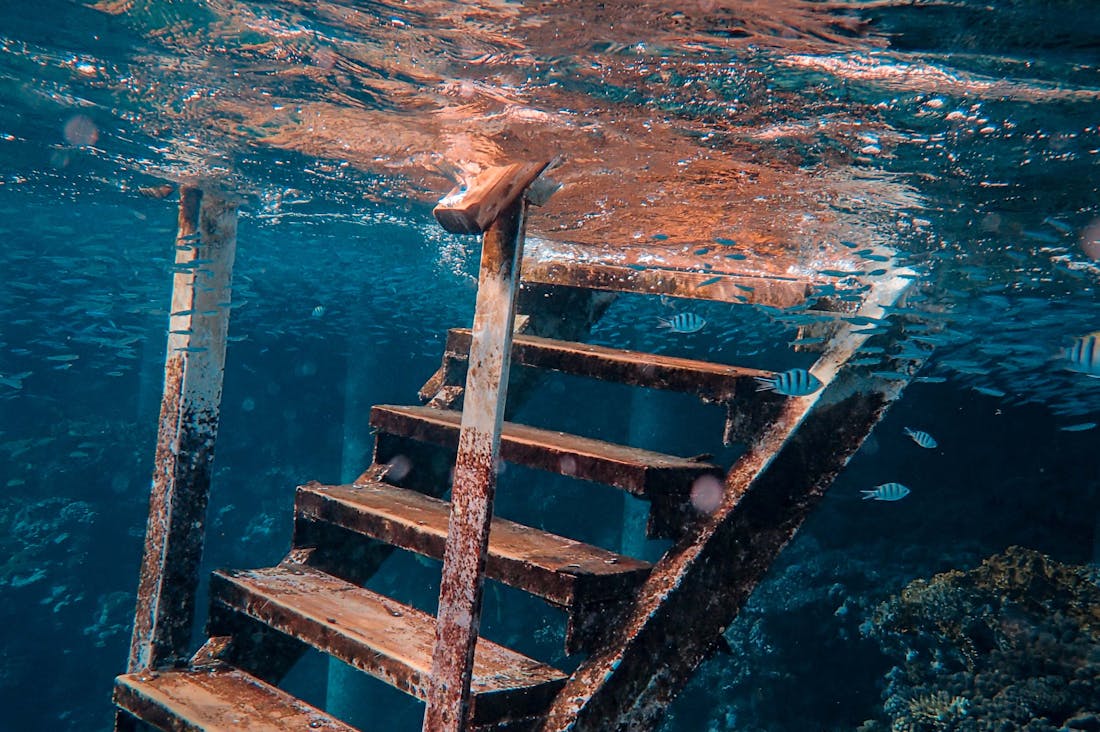The ocean, covering over 70% of our planet, remains one of the last frontiers of exploration. “The Mysteries of the Deep Ocean: What Lies Beneath?” delves into the enigmatic depths where light fades, revealing the haunting beauty of bioluminescent creatures, ancient shipwrecks, and ecosystems thriving in darkness. Join us as we uncover the secrets hidden beneath the waves, exploring the myriad of life forms and geological wonders that challenge our understanding of nature. Discover how these depths hold not only ecological treasures but also clues to the planet's past and future.

Unveiling the Secrets of the Abyss
"Unveiling the Secrets of the Abyss" invites us to explore the mysteries that lie beneath the ocean's surface, a realm that remains one of the least understood parts of our planet. This vast expanse, characterized by darkness and extreme conditions, hosts an array of life forms adapted to its harsh environment, from bioluminescent creatures to enormous deep-sea fish. Through advancements in technology such as submersibles and underwater drones, scientists are beginning to uncover the secrets of these uncharted depths. Each exploration reveals new species, geological formations, and even ancient shipwrecks, challenging our understanding of biodiversity and the planet's history. As we delve deeper, we confront important questions about conservation and the balance of ecosystems that have thrived in isolation for millennia. The abyss, thus, becomes not just a place of wonder but a vital frontier for scientific discovery and environmental stewardship.

The Role of Technology in Ocean Discovery
Technology plays a pivotal role in advancing our understanding of the oceans, facilitating discoveries that were once unimaginable. Innovations such as autonomous underwater vehicles (AUVs) and remotely operated vehicles (ROVs) enable scientists to explore the deep sea, capturing high-resolution images and collecting samples from regions previously deemed unreachable. Advanced sonar mapping techniques allow researchers to create detailed maps of the ocean floor, revealing underwater structures and ecosystems. Furthermore, satellite technology provides critical data on ocean currents, temperature variations, and biodiversity. The integration of artificial intelligence and big data analysis enhances our ability to interpret vast amounts of oceanic data, ultimately deepening our insight into marine environments and aiding conservation efforts. As technology continues to evolve, it promises to unlock further secrets of the ocean, guiding effective management and preservation of this vital resource.

Protecting Our Oceans: A Call to Action
Protecting our oceans is not just an environmental imperative; it is a call to action that resonates with everyone, as our seas are vital to life on Earth. With more than 70% of the planet’s surface covered by water, oceans play a crucial role in climate regulation, oxygen production, and supporting biodiversity. However, pollution, overfishing, and climate change pose severe threats to marine ecosystems. To safeguard these precious waters, we must advocate for sustainable practices, support marine protected areas, and reduce plastic consumption. Each of us can make a difference—by educating ourselves, supporting conservation efforts, and committing to eco-friendly habits, we can ensure vibrant oceans for generations to come. Let’s unite in this vital mission to restore and protect our oceans, the lifeblood of our planet.
The Enigmatic World of Bioluminescence
Bioluminescence, the natural phenomenon where living organisms emit light, captivates our imagination and is predominantly found in the deep ocean. Creatures such as jellyfish, anglerfish, and certain types of plankton showcase this incredible ability, which serves various purposes, including attracting prey, communication, and camouflage. The vibrant displays of light illuminate the dark waters, revealing a hidden world of beauty and complexity. Scientists are intrigued by these adaptations, as they hold potential applications in medicine, technology, and environmental monitoring. Understanding bioluminescent mechanisms could lead to breakthroughs in biosensing technologies, providing insights into the health of marine ecosystems and informing conservation efforts. As we explore this mesmerizing aspect of ocean life, we also reflect on the mysteries that remain unsolved, igniting curiosity about the potential discoveries that await beneath the waves.
Ancient Shipwrecks: Time Capsules of History
The deep ocean is home to countless shipwrecks, each a time capsule that narrates stories of maritime history and human endeavor. These wrecks, often preserved in the cold, dark depths, provide invaluable insights into past civilizations, trade routes, and technological advancements. Archaeologists and marine historians are now employing advanced underwater exploration techniques to study these submerged relics, piecing together narratives that span centuries. Each wreck holds artifacts that tell tales of triumph and tragedy, while also highlighting the importance of protecting our maritime heritage. However, the threats of deep-sea mining and treasure hunting pose risks to these archaeological sites, underscoring the need for stringent regulations. By safeguarding these underwater treasures, we not only honor our history but also ensure that future generations can learn from and appreciate the complexities of our shared past.
Exploring Hydrothermal Vents: Life in Extreme Conditions
Hydrothermal vents, found along mid-ocean ridges, unveil yet another fascinating aspect of deep-sea ecosystems. These underwater geysers release mineral-rich, superheated water, creating unique habitats that support diverse marine life, including giant tube worms, clams, and various species of bacteria. The discovery of these ecosystems challenged traditional notions of life, as they thrive in complete darkness, relying on chemosynthesis rather than sunlight for energy. Research into these environments not only enhances our understanding of biodiversity but also offers clues about the origins of life on Earth and potentially other planets. As scientists continue to study hydrothermal vents, they uncover the intricate relationships between species and their environments, emphasizing the resilience and adaptability of life. These findings underscore the importance of protecting these fragile ecosystems, which may hold the key to understanding life’s potential in extreme conditions across the universe.
The Future of Ocean Exploration and Conservation
Looking ahead, the future of ocean exploration is a promising field filled with potential discoveries and advancements. As climate change and human activities threaten marine environments, it is imperative that we enhance our understanding of ocean systems. International collaborations among scientists, policymakers, and conservationists are essential to address these urgent challenges. Innovative research initiatives aim to explore uncharted territories of the ocean, utilizing cutting-edge technologies such as artificial intelligence and machine learning to analyze vast datasets. Additionally, establishing marine protected areas and promoting sustainable fishing practices will play a crucial role in preserving marine biodiversity. The fusion of exploration and conservation efforts will ensure that we not only uncover the secrets of the ocean but also take proactive measures to protect its invaluable resources for future generations. Through education and advocacy, we can foster a global movement committed to safeguarding the health of our oceans and the myriad of life forms they sustain.
AI-Assisted Content Disclaimer
This article was created with AI assistance and reviewed by a human for accuracy and clarity.